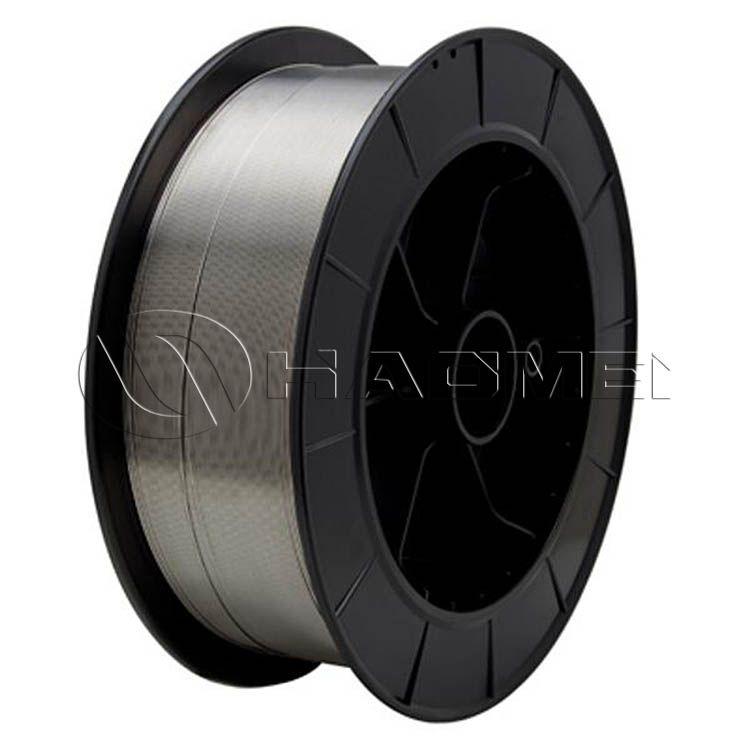Aluminum Solid Wire for Ship Welding
In the field of shipbuilding, aluminum alloys have gradually become important structural materials due to their advantages such as light weight, high strength and corrosion resistance. As a key consumable in the welding process of aluminum alloys, the performance and selection of marine aluminum welding wires directly affect the welding quality and the overall performance of the ship.

Commonly used welding wire types in ship welding
There are many types of welding wires involved in ship welding, and different types of welding wires are suitable for different welding processes and base materials. In aluminum alloy welding, common ones include gas shielded welding wires and submerged arc welding wires.
Gas shielded welding wires such as ER5356 and ER4043 solid wire are commonly used in MIG (metal inert gas shielded welding) and TIG (tungsten inert gas shielded welding) welding processes. Submerged arc welding wires play a role in the welding of specific large structural parts, which can achieve efficient and high-quality welding.
Alloys of marine aluminum welding wires
Aluminum-magnesium alloy welding wire
Aluminum-magnesium alloy welding wire uses magnesium as the main alloying element, and common ones include ER5356 and ER5183. The magnesium content is usually around 3% - 5%, and this type of welding wire has good strength and corrosion resistance.
Due to the characteristics of aluminum-magnesium alloy itself, the joints welded with this type of welding wire have excellent strength and elongation, and can effectively resist corrosion in the marine environment. In ship structures, it is often used for welding parts such as the bottom outer plate, keel, ribs and ribs, which have extremely high requirements for material strength and corrosion resistance.
For example, 5356 welding wire contains about 5% magnesium, has high strength, good corrosion resistance and fluidity, can reduce cracks and pores, the weld strength can exceed the parent material, and the heat-affected zone is small. It is suitable for welding 5 series (such as 5052, 5083) and 6 series (such as 6061, 6063) aluminum alloys, and can also be used for some 7 series alloys.
ER5183 is for aluminum alloys with high hardness requirements, such as marine 5083, etc. Its magnesium content is about 4.5%, which improves the hardness and tensile strength of the welded joint.
Aluminum-silicon alloy welding wire
ER4043 is the most common aluminum-silicon alloy welding wire, with a silicon content of about 5%. This welding wire has good crack resistance and is particularly suitable for welding heat-treated strengthened aluminum alloys that are prone to hot cracks. In shipbuilding, it is often used in some parts that have relatively low requirements for corrosion resistance but high requirements for crack resistance.
However, its corrosion resistance is slightly inferior to that of aluminum-magnesium alloy welding wire. It is a general-purpose welding wire suitable for welding 6 series aluminum alloys (such as 6061), but not suitable for high-magnesium alloys.
Pure aluminum welding wires
Pure aluminum welding wires such as ER1100 have an aluminum content of ≥99.5% and have excellent corrosion resistance, electrical conductivity and thermal conductivity, but their strength is relatively low. On ships, they are often used in some parts that do not require high strength but have special requirements for corrosion resistance and electrical conductivity, such as welding of some electrical equipment connection parts on ships. It is dedicated to 1000 series pure aluminum (such as 1050, 1060).
Other alloy welding wires
In addition to the above common types, there are also ER3003 aluminum-manganese welding wires, which have good corrosion resistance and plasticity and are suitable for welding 3 series aluminum alloys (such as 3003); ER2319 aluminum-copper welding wires, containing 5.8%-6.8% copper, are dedicated to welding 2219 and other aluminum-copper alloys.









